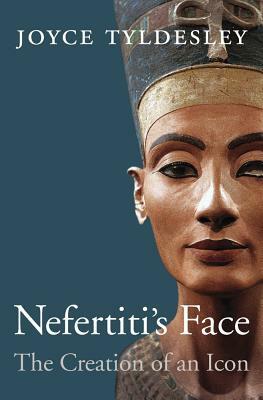
Nefertiti's Face: The Creation of an Icon
by Joyce Tyldesley
Genres: History, Non-fictionPages: 240
Rating:

Synopsis:Little is known about Nefertiti, the Egyptian queen whose name means "a beautiful woman has come." She was the wife of Akhenaten, the pharaoh who ushered in the dramatic Amarna Age, and she bore him at least six children. She played a prominent role in political and religious affairs, but after Akhenaten's death she apparently vanished and was soon forgotten.
Yet Nefertiti remains one of the most famous and enigmatic women who ever lived. Her instantly recognizable face adorns a variety of modern artifacts, from expensive jewelry to cheap postcards, t-shirts, and bags, all over the world. She has appeared on page, stage, screen, and opera. In Britain, one woman has spent hundreds of thousands of pounds on plastic surgery in hope of resembling the long-dead royal. This enduring obsession is the result of just one object: the lovely and mysterious Nefertiti bust, created by the sculptor Thutmose and housed in Berlin's Neues Museum since before World War II.
In Nefertiti's Face, Egyptologist Joyce Tyldesley tells the story of the bust, from its origins in a busy workshop of the late Bronze Age to its rediscovery and controversial removal to Europe in 1912 and its present status as one of the world's most treasured artifacts. This wide-ranging history takes us from the temples and tombs of ancient Egypt to wartime Berlin and engages the latest in Pharaonic scholarship. Tyldesley sheds light on both Nefertiti's life and her improbable afterlife, in which she became famous simply for being famous.
Joyce Tyldesley’s Nefertiti’s Face tackles not (as I think some other readers have hoped) who Nefertiti was, where she came from, what she might have been like, and how she died — though some of that is discussed as well — but the specifics of the famous limestone and gypsum plaster bust of her, currently on display in the Egyptian Museum of Berlin. It accepts the attribution to the artisan Thutmose (or at least to his workshop in Amarna), and has a guess at aspects of the life of Thutmose and his workmen as well as at the purpose and meaning of the bust.
That does of course involve some contextualisation for people who might be coming to this fresh, so it includes a chapter about Akhenaten and the establishment of Amarna. Tyldesley rather squashes the hope that Nefertiti was equal to Akhenaten in some way, pointing out her position in the art is usually subordinate to his, and her exceptional actions like smiting enemies are always in the context of his absence — disappointing, but a good analysis.
Obviously there’s always the conjectures about where her tomb might lay (or have lain), and about who might’ve been related to whom and how among the Amarna family.
There is also inevitably discussion about repatriation, which Tyldesley seems somewhat against (claiming that the exhibition of the bust in Berlin benefits Cairo by encouraging people in their love of Egyptian archaeology, and thus boosting tourism). Ho-hum.
Overall, I found this one enjoyable, though obviously aimed at a popular audience. It does have footnotes and a fairly detailed bibliography; always a good sign.
Rating: 4/5

Leave a Reply